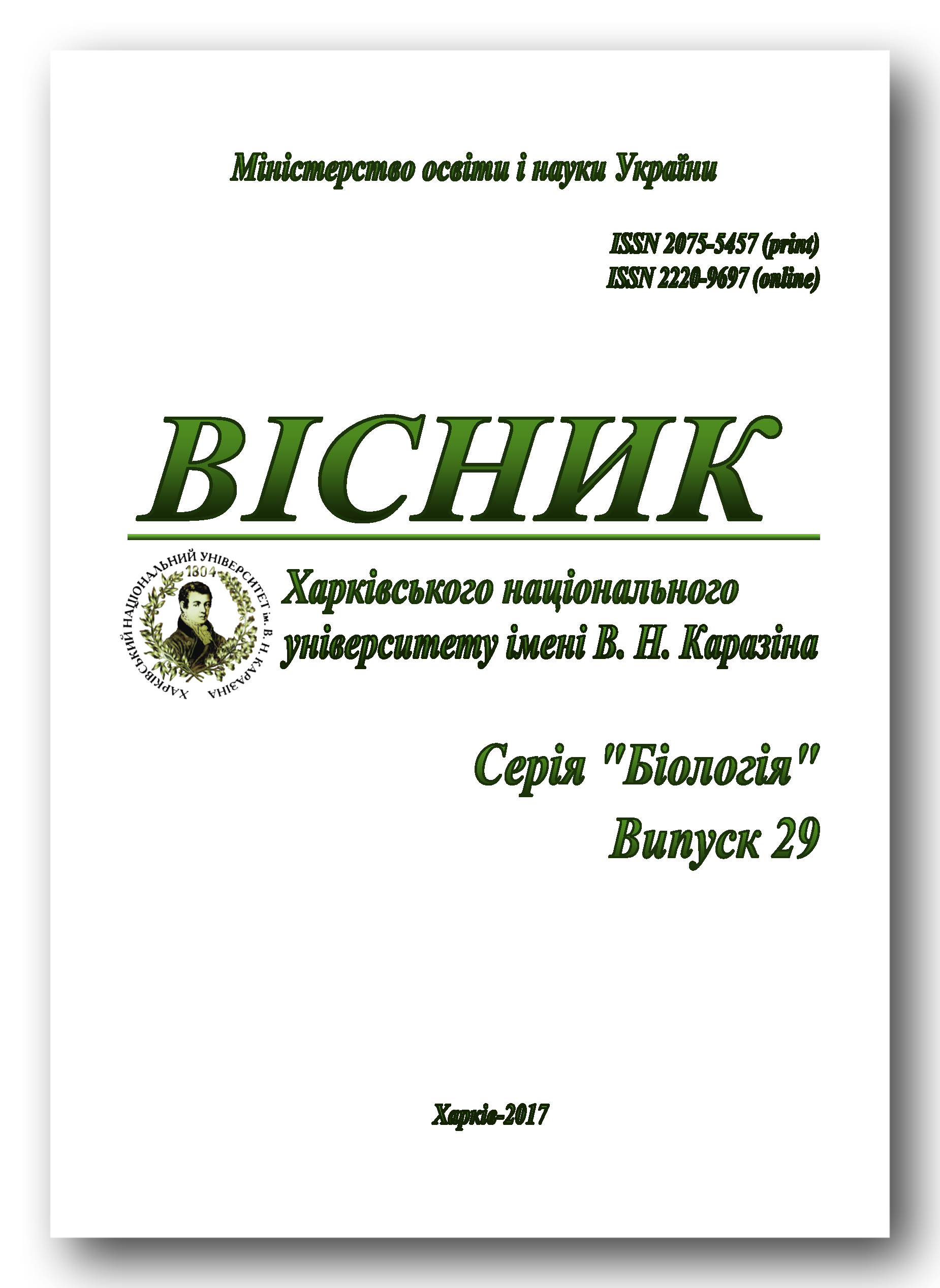Level of intensity of lipid peroxidation and oxidizing modification of proteins process in membranic fractions of Escherichia coli cells as a biomarker of metals nanoparticles biocompatibility testing
Abstract
The purpose of our work was to determine the intensity of lipid peroxidation (LPO) by the level of formation of its products – diene conjugates and malonic dialdehyde and oxidation modification of proteins (OMB) – by the level of formation of neutral and basic carboxylic derivatives in isolated total membrane fraction (TMF) of Escherichia coli cells of production strains under preincubation conditions with nanoparticles of Aurum and Argentum (NPAu and NPAg) in the size range. It has been determined that experimental samples of NPAu and NPAg of an average size of ~30 nm can be considered as the most biocompatible for the restoration and/or normalization of the intensity of the LPO and OMB processes in the membrane fractions of E. coli cells of production strains indicating their membranotropic properties; the use of them provides the opportunity to create a new means of managing the structural and functional state of bacterial cells. In the case of contact interaction of NPAu of an average size of ~20 and ~45 nm and NPAg of an average size of ~30 nm with TMF of cells of strain 57 an increase was recorded in the intensity of the LPO and OMB processes, and at interaction of NPAu of a size of ~20 nm with cells of the strain 20 – OMB processes, respectively, indicating the prooxidant and membranotoxic effects of such NPMs of these sizes. That is, in the case of the lipoperoxidation activation at the action of NPAu oxidative stress can be signaling and in the case of intensification of OMB processes at the physiological level of LPO activity and at NPAg action – destructive. It should also be noted that an important aspect of clarifying the influence of nanoparticles of metals on antioxidant system (AOS) is to determine the dependence of its reaction on the original redox status of the cell itself. That is, the potential danger of experimental NPMs is dependent on their discrete sizes and is individual for different strains within a single taxonomic type of microorganism; on the other hand, the specific mechanisms of biocompatibility or cytotoxic action of NPMs are difficult to distinguish because they can vary greatly even within the same class of nanomaterials, so this question is still debatable.
Downloads
Authors retain copyright of their work and grant the journal the right of its first publication under the terms of the Creative Commons Attribution License 4.0 International (CC BY 4.0), that allows others to share the work with an acknowledgement of the work's authorship.




